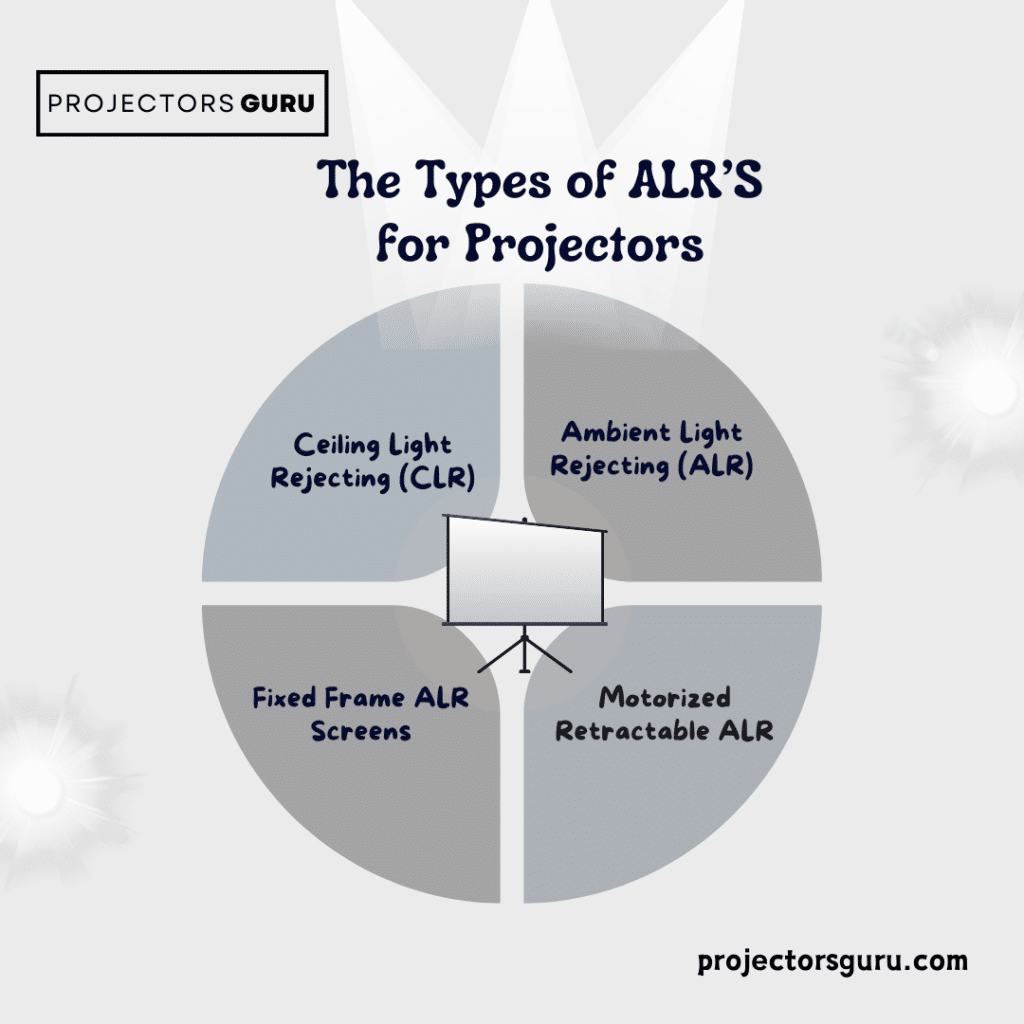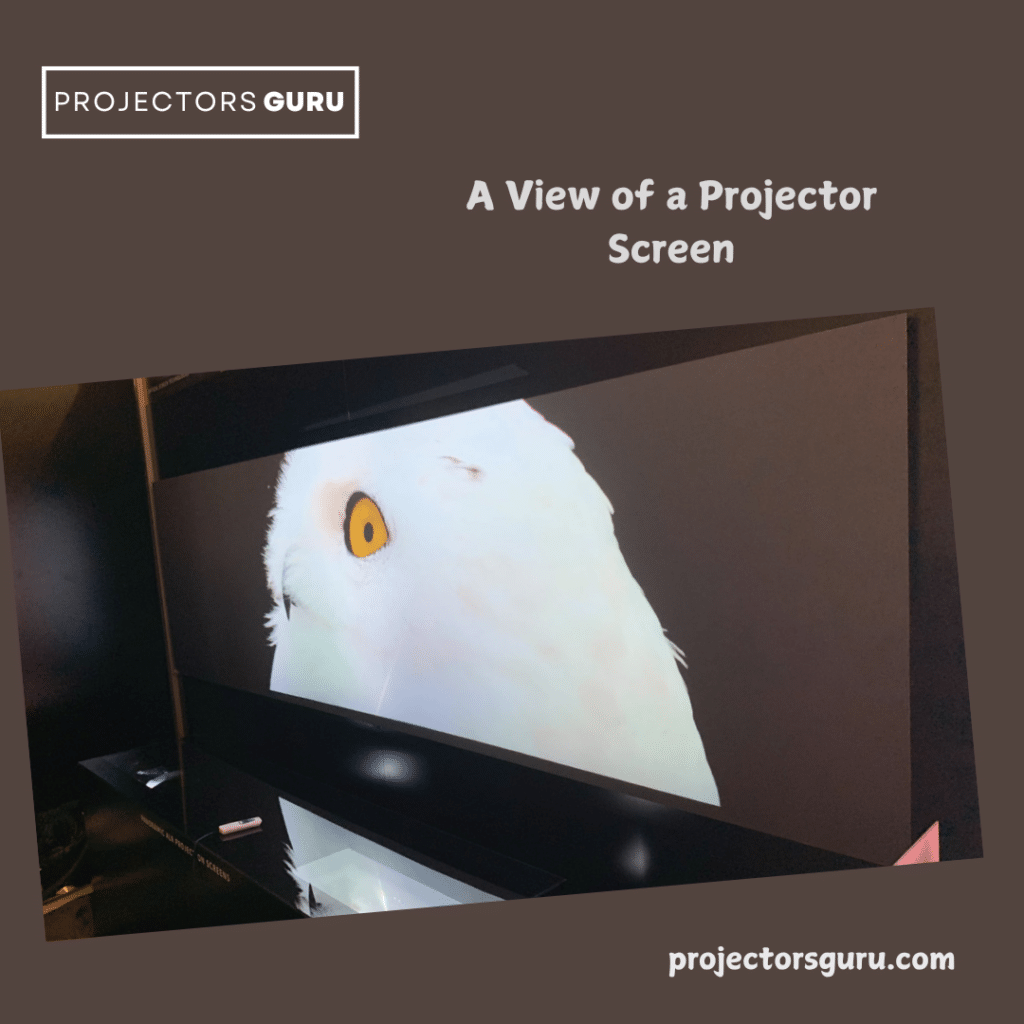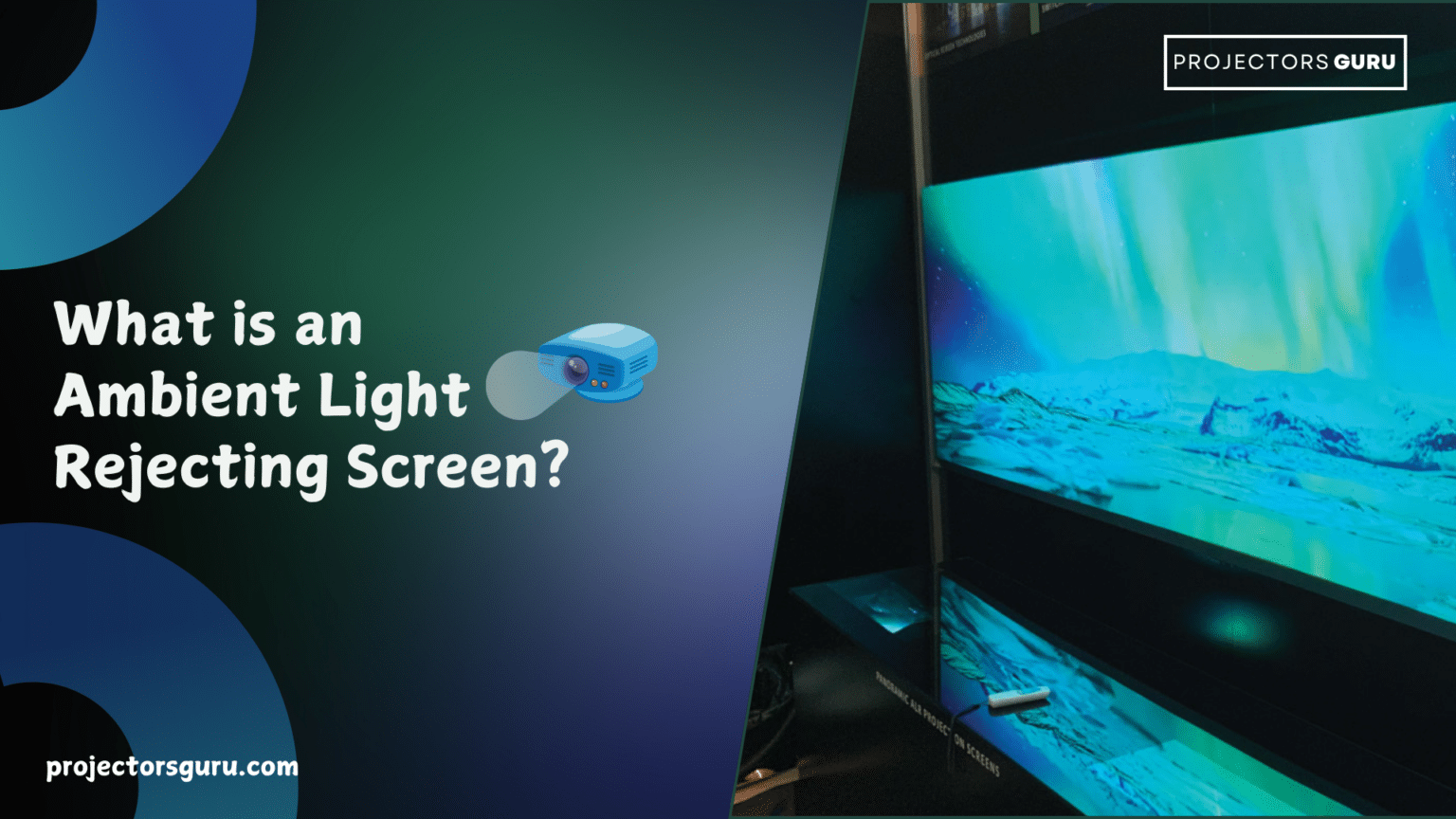Welcome to the world of great visual experiences where big screen is all the magic. You all know that achieving the perfect picture quality in home theaters and professional presentations can be sometimes feel like a task. Particularly in settings with a lot of ambient light. Now, did you ever wonder what is the answer to the glare you see while enjoying a smooth visually promising movies? Ambient light-rejecting screen also known as ALR address this problem, improving the visibility and caliber of projected images. In today’s era of 21st century, small screens are rather no more considered ad these big projectors have taken over. However, only if you find the best kind of screens. You must be wondering what actually are these light rejecting screens and how do they work, right? Let us learn more about them and how they ease up our visuals!
What is an Ambient Light Rejecting Screen?
You know bright lights are great but sometimes when it gets too much you need to find a way to suppress them. But how exactly? An Ambient Light Rejecting (ALR) projector screen aims to improve image quality in bright spaces. ALR displays concentrate on reflecting the light from the projector back toward the spectator, in contrast to regular screens that reflect light in all directions. By doing this, the effect of ambient light sources like overhead or ceiling lights is lessened, preserving a sharper and more colorful image. Wide viewing angles and super short-throw projectors work exceptionally well with ALR screens, perfect for spaces with unpredictable lighting. Let’s see now how they work.

How do ALR’s Work?
ALR (Ambient Light Rejection) screens use modern materials and technology to maximize projected visuals under different lighting scenarios. Combining their reflecting and absorbent qualities achieves their exceptional contrast and clarity. Here’s a look at how they function;
- Reflective Projection
- The purpose of ALR screens is to bounce back light in the observer’s direction. This improves brightness and color accuracy by concentrating on the projected image.
- Light Absorption
- They reduce the amount of ambient light on the screen by absorbing or rerouting it. This lessens glare and guarantees the picture is sharp and clear, even in well-lit areas.
- Specialized Materials
- ALR screens have layers or coatings designed to reject unwanted light and enhance the quality of the picture.
Types of Ambient Light Rejection Screens
Here’s a look at some of the types of ambient light rejection screens. Also, for some reasonable buying options, click on the video link above!
ALR Projection Screens
Designed for front projection setups, they enhance image quality by rejecting ambient light.
- Made with front projection screen setups in mind
- Rejects background light in favor of sharp pictures
- Even in well-lit spaces, retains exceptional image clarity
Motorized Ambient Light Rejecting Screens
Feature automated operation for smooth retraction and deployment, ideal for advanced home theater systems.
- Easy-to-use automated functioning
- Uses a motor to smoothly retract or deploy
- Perfect for automated, sophisticated home theater systems
Static Frame ALR Displays
Fixed in place for a stable viewing surface, perfect for dedicated home theater rooms.
- Stays in one place at all times
- Offers a steady and reliable viewing surface.
- Ideal for permanent screen setups in home theater rooms dedicated to this purpose.

The PROS of ALR Screens
Here’s a quick look at some of the pros you get out of ambient light rejecting screens.
- Improved Image Clarity: ALR (Ambient Light Rejection) screens reduce the impact of ambient light, improving contrast and color accuracy. Even in well-lit areas, this results in crisper and more colorful visuals.
- Broad Viewing Angle: With their wide viewing angles, these screens allow users to see excellent images from a variety of chair locations in the space.
- Flexibility: ALR screens work with a range of projectors, such as short-throw and ultra-short-throw (UST) models. This adaptability enables a variety of projector kinds and installation configurations.
KEY ADVANTAGES
- Enhanced color and contrast
- High definition in well-lit spaces
- Uniform image quality from various perspectives
- Suitability for a variety of projector types
Black Grid ALR Screen and Fresnel Screen
Think about the following while choosing between a Fresnel screen and a Black Grid ALR screen;
Ambient Light Rejecting Screen with Black Grid
First, here is a look a the ambient light rejecting screen.
- Excellent Ambient Light Rejection: Adapts to different lighting situations, perfect for situations with mixed illumination.
- Improved Contrast: Offers more accurate color reproduction and deeper blacks.
Fresnel Ambient Light Rejecting Screen
Here is a look at the Fresnel ambient rejecting light.
- Brightness Boost: Increases brightness in dimly lit areas by more effectively focusing light.
- Cost-effective: It is usually less expensive but might need more sophisticated light management.
- Room Lighting: Ambient light is more suited for ALR screens, but Fresnel screens perform better in dimly lit environments.
- Projection Quality: Verify that your projector’s alignment is ideal for the screen you have selected.
Some Installation Tips for ALR
- Screen Placement: Reduce ambient light sources and place your ALR screen away from overhead lights. This lessens reflections and glare, allowing the screen to operate at its best.
- Projection Alignment: Make sure your projector and screen are lined up correctly. Proper alignment improves the brightness and clarity of the image by ensuring that the projected image reaches the screen at the correct angle.
- Lighting: Control the lighting in your room to complement your ALR screen material. While ALR screens may handle some ambient light, more light can be directed away from the screen or dimmed to enhance picture quality and create a more vibrant viewing experience. You can also do that to your Christmas light colorful projector.

Final Thoughts
Summing up, Ambient Light Rejecting (ALR) screens are revolutionary for home theaters because they skillfully control ambient light to provide crisp, colorful images. Even with extremely short throw projectors, these screens improve picture quality by removing undesirable ambient lights. ALR screens efficiently manage light from the ceiling and overhead, guaranteeing that your projected images remain clear and brilliant.
In conclusion, purchasing an anti-light projector screen gives you excellent performance and captivating viewing in various lighting scenarios. An ambient light-rejecting screen is a wise investment for the best home cinema experience.
DIM THAT EXTRA GLARE!




